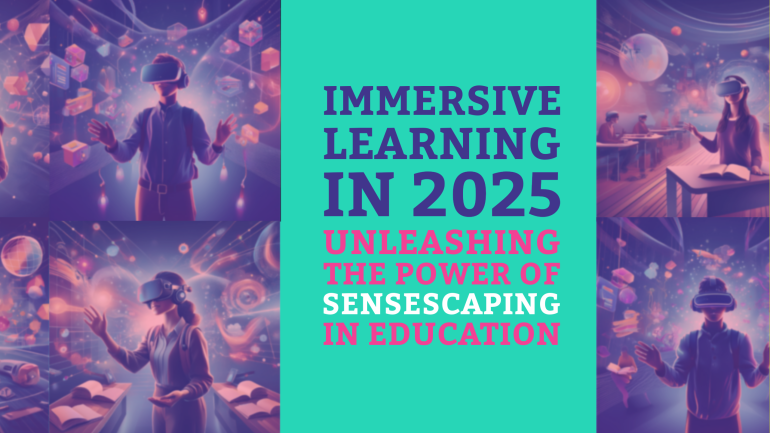Table of Contents
TL;DR: Harnessing Effective Recruitment for Academic Excellence
- Understanding the Market: Higher education institutions need to research and comprehend the current market trends and demands to tailor effective recruitment strategies.
- Utilizing Diverse Platforms: Employ a variety of platforms such as social media, job boards, and career fairs to reach a wide pool of potential candidates.
- Highlighting Institution’s Strengths: Emphasize the unique selling points of the institution to attract top talent, including academic excellence, research opportunities, and campus culture.
- Building Relationships: Establish strong relationships with candidates through personalized communication, networking events, and campus tours to create a positive candidate experience.
- Measuring Success: Implement metrics and analytics to track the effectiveness of recruitment strategies and make data-driven decisions to continuously improve the process.
There’s no denying the importance of effective recruitment strategies in the world of higher education. With an increasingly competitive landscape and a growing emphasis on attracting top talent, universities and colleges must stay ahead of the curve when it comes to recruitment. In this blog post, we will explore some key strategies that can help institutions attract and retain the best and brightest students, faculty, and staff.
Analyzing the Target Demographic
Understanding the Needs and Values of Prospective Students
Some of the most critical tasks in creating effective recruitment strategies for higher education institutions are understanding the needs and values of prospective students. By comprehensively analyzing the demographics and psychographics of potential applicants, universities can tailor their outreach efforts to resonate with the target audience. It is crucial to identify what drives prospective students, what their aspirations are, and what factors influence their decision-making processes when choosing a college or university.
Utilizing Data Analytics to Identify Potential Applicants
Some of the most effective recruitment strategies in higher education involve utilizing data analytics to identify potential applicants. By leveraging sophisticated algorithms and predictive modeling, institutions can pinpoint individuals who are likely to be interested in their programs. This targeted approach allows universities to allocate resources more efficiently and effectively, increasing the likelihood of attracting qualified candidates.
Prospective students’ online behaviors, such as website visits, social media interactions, and email engagement, can provide valuable insights into their preferences and interests. By analyzing this data, universities can create personalized marketing campaigns that resonate with the target demographic, ultimately leading to higher conversion rates and enrollment numbers.
Branding and Marketing Strategies
Developing a Strong Institutional Brand
There’s no denying the importance of establishing a strong institutional brand in higher education. A well-defined brand helps differentiate an institution from its competitors, conveys its values and unique selling points, and attracts both students and faculty. To develop a strong institutional brand, it is crucial to conduct thorough market research, define the institution’s mission and vision, and create a consistent brand identity across all communication channels.
Effective Use of Digital Marketing Channels
An effective digital marketing strategy is paramount for higher education institutions looking to reach and engage with their target audience. One of the most powerful tools in this strategy is leveraging digital marketing channels such as social media, email marketing, search engine optimization (SEO), and content marketing. These channels allow institutions to connect with prospective students, alumni, and other stakeholders in a personalized and targeted manner, ultimately driving enrollment and engagement.
Strategies: When utilizing digital marketing channels, it is crucial to track and analyze data to measure the effectiveness of campaigns, adjust strategies accordingly, and ensure a high return on investment. Additionally, institutions must stay updated on the latest trends and technologies in digital marketing to remain competitive in the ever-evolving landscape.
Outreach and Engagement Techniques
Building Relationships with High Schools and Community Colleges
Your recruitment efforts in higher education should begin long before students start applying. An effective strategy is to build strong relationships with high schools and community colleges. This can involve setting up regular visits to these institutions, attending college fairs, and collaborating with school counselors to provide students with the information they need to make informed decisions about their academic future.
Hosting Engaging Campus Visits and Virtual Tours
With the rise of technology, campus visits and virtual tours have become crucial components of the recruitment process in higher education. These experiences give prospective students a firsthand look at campus life, academic offerings, and extracurricular activities. Hosting engaging campus visits and virtual tours can significantly impact a student’s decision to apply and enroll at your institution.
Another important aspect to consider when hosting these events is to ensure that they are interactive and personalized. Offering opportunities for students to engage with current faculty, staff, and students can provide them with a positive and memorable experience that sets your institution apart from others.
The Role of Technology in Recruitment
Keep up with the changing landscape of recruitment in higher education by embracing technology. Technology plays a crucial role in streamlining the recruitment process, reaching a wider audience, and engaging with potential candidates more effectively.
Leveraging Social Media Platforms for Recruitment
An crucial aspect of modern recruitment strategies is leveraging social media platforms to connect with prospective students. Platforms like Facebook, Instagram, Twitter, and LinkedIn provide a vast pool of potential candidates to tap into. By creating engaging content, utilizing targeted advertisements, and interacting with followers, institutions can create a strong online presence that attracts and retains top talent.
Implementing Customer Relationship Management (CRM) Systems
Media CRM systems are powerful tools that enable higher education institutions to manage their interactions with potential candidates efficiently. By centralizing all communication and data, institutions can track prospective students’ journey from initial contact to enrollment. This ensures personalized communication, timely follow-ups, and a seamless recruitment experience. CRM systems also provide valuable insights through analytics, helping institutions make data-driven decisions to improve their recruitment strategies.
Technology is revolutionizing the way higher education institutions approach recruitment. By embracing CRM systems and social media platforms, institutions can stay ahead of the competition, engage with candidates effectively, and make informed decisions to attract the best talent.
Financial Aid and Scholarship as Recruitment Tools
Designing Attractive Financial Aid Packages
All Higher Education institutions strive to attract the best and the brightest students to their programs. Financial aid packages play a crucial role in motivating potential students to choose one institution over another. Institutions need to carefully design their financial aid packages to make them attractive and competitive. This includes a mix of scholarships, grants, work-study programs, and low-interest loans. By offering a variety of financial aid options, institutions can cater to a diverse range of students with different financial needs.
Marketing Scholarships to Target Populations
Recruitment strategies need to include targeted marketing of scholarships to specific groups of students. Institutions can tailor their scholarship offerings to attract students from underrepresented backgrounds, high-achieving academic performers, or those pursuing specific fields of study. By marketing scholarships effectively through various channels such as social media, university websites, and college fairs, institutions can increase their visibility and appeal to a wider pool of potential applicants.
This targeted approach not only helps institutions attract a more diverse student body but also creates a positive reputation within these communities. By highlighting the availability of scholarships and financial aid opportunities, institutions can demonstrate their commitment to supporting students from all backgrounds in achieving their academic goals.
Diversity and Inclusion in Recruitment
After realizing the importance of diversity and inclusion in higher education, it is imperative for institutions to focus on these aspects during the recruitment process. Creating a diverse and inclusive student body not only enhances the learning environment but also prepares students for a globalized world where understanding and appreciating differences are necessary skills.
Strategies for Recruiting a Diverse Student Body
Recruiting a diverse student body entails implementing strategies that reach out to underrepresented populations and create opportunities for all students to access higher education. This can be achieved through targeted outreach programs, partnerships with high schools in diverse communities, offering scholarships and financial aid, and engaging with community organizations that support diverse student populations.
Creating Inclusive Admissions Policies and Practices
Inclusion in admissions policies and practices is crucial for fostering a welcoming and supportive environment for all students. This involves examining and revising admission criteria to ensure they are equitable and free from bias. Providing resources and support services for students from diverse backgrounds can also help in creating an inclusive campus culture.
The implementation of inclusive admissions policies and practices is necessary for attracting and retaining a diverse student body. Admissions processes should be transparent and non-discriminatory, providing equal opportunities for all applicants. Furthermore, offering support services such as mentorship programs and academic resources can help students from underrepresented backgrounds thrive in higher education.
Measuring Success and Continuous Improvement
Setting Benchmarks and Analyzing Recruitment Metrics
Now, as you implement your recruitment strategies in higher education, it is crucial to measure the success of your efforts. This involves setting benchmarks to track progress and analyzing recruitment metrics to understand what is working well and where improvements can be made. By establishing key performance indicators (KPIs) and regularly monitoring them, you can ensure that your recruitment efforts are effective and efficient.
The Cycle of Feedback and Iterative Strategy Adjustment
With a focus on continuous improvement, it is crucial to create a cycle of feedback and iterative strategy adjustment in your recruitment process. This involves collecting feedback from various stakeholders, including students, faculty, and staff, to gain insights into the effectiveness of your strategies. By evaluating this feedback and making iterative adjustments to your recruitment strategies, you can ensure that you are meeting the evolving needs of your target audience.
For instance, if feedback suggests that a particular recruitment event did not attract as many prospective students as expected, you can analyze the event’s execution and make changes for future events. This iterative approach allows you to refine your strategies based on real-time feedback, leading to more successful recruitment outcomes.
Reflecting on the Effective Recruitment Strategies
Analyzing the effectiveness of your recruitment strategies is a critical step in the continuous improvement process. By reflecting on the outcomes of your recruitment efforts, you can identify areas of success and areas that may require adjustments. This reflective practice allows you to learn from past experiences and make data-driven decisions to enhance your recruitment strategies for the future.
Adjustment is an ongoing process, and by continually reflecting on your recruitment strategies, you can ensure that you are adapting to the changing landscape of higher education and student recruitment.
Envisioning the Future of Student Recruitment in Higher Education
Continuous improvement is key to envisioning the future of student recruitment in higher education. By staying abreast of industry trends, technological advancements, and shifting student preferences, you can proactively adjust your recruitment strategies to meet the needs of tomorrow’s students. Embracing innovation and adapting to change will position your institution as a leader in effective student recruitment.
Feedback from stakeholders and data analysis will be crucial in shaping the future of student recruitment, ensuring that your strategies remain relevant and impactful in the rapidly evolving landscape of higher education.
FAQ
Q: What are effective recruitment strategies in higher education?
A: Effective recruitment strategies in higher education involve utilizing multiple channels to attract and engage potential candidates, such as job boards, social media, career fairs, and networking events.
Q: How can higher education institutions improve their recruitment process?
A: Higher education institutions can improve their recruitment process by defining clear job requirements, showcasing their institution’s unique selling points, engaging with candidates on a personal level, and following up promptly with qualified candidates.
Q: What role does employer branding play in recruitment strategies for higher education?
A: Employer branding plays a crucial role in recruitment strategies for higher education as it helps institutions differentiate themselves from competitors and attract top talent by showcasing their values, culture, and benefits.
Q: How important is diversity and inclusion in recruitment efforts for higher education?
A: Diversity and inclusion are vital aspects of recruitment efforts for higher education as they promote a welcoming and inclusive environment, attract a diverse pool of candidates, and enhance innovation and creativity within the institution.
Q: What are some best practices for evaluating the effectiveness of recruitment strategies in higher education?
A: Some best practices for evaluating the effectiveness of recruitment strategies in higher education include tracking key metrics like time-to-fill, cost-per-hire, and retention rates, collecting feedback from candidates and hiring managers, and adjusting strategies based on data-driven insights.




